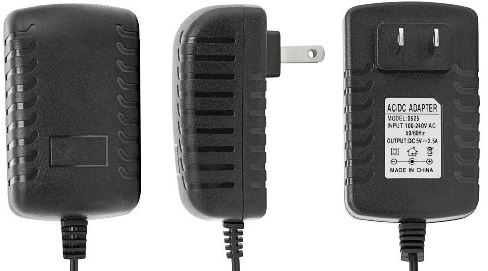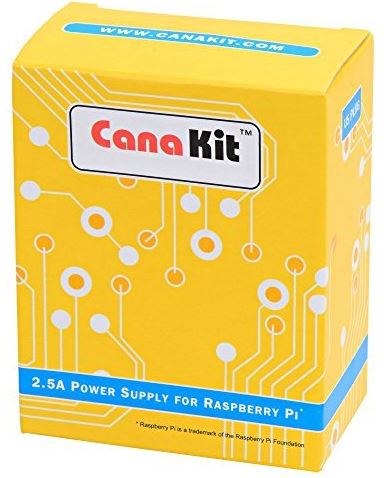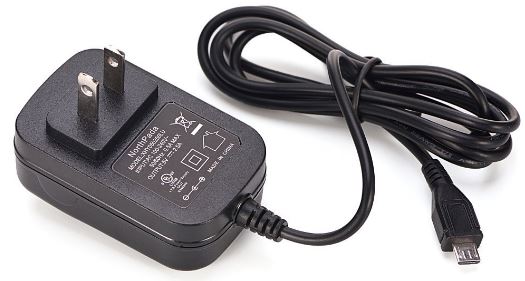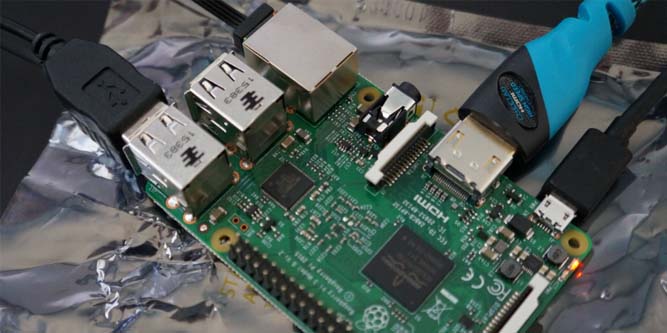Previous versions of the Raspberry Pi did not require a lot of power. Although the manufacturer recommended a power supply that could supply 2A at 5VDC, many consumers found that they had no problems running them off of standard 1.5A phone chargers. The need for a high current power supply was overstated since the device is so customizable.
A device with just a bit of RAM and no peripherals would use very little power. Some people might deck out their device with every accessory available and stuff every port with a power hungry add-on. Those are the people that needed to adhere to the 2A standard. Since most devices worked fine with a low output supply, Raspberry Pi users got used to ignoring the requirements. 3rd party manufacturers started selling under-supplied PSUs and labeling them for use with the Raspberry Pi since they saved more money. There were very few problems.
The Raspberry Pi 3 came out and changed everything. In that tiny little package was a surprisingly powerful little computer. 1.2GHz quad core processor, WiFi, 1 GB RAM, Bluetooth, and more were present. The USB ports allows you to connect the same wireless mice, keyboards and storage devices you use with your laptop or desktop PC. 3rd party manufacturers wasted no time in developing I/O expansions, displays, motor controls, and breakout kits.

When users started getting their Raspberry Pi 3 kits and trying them out, there many issues. Some of the devices began to heat up. Others froze or restarted in the middle of running a program. The wireless internet connections would have a weak signal or experience drop outs. Many brilliant minds puzzled over the problem to figure out what the issue could be. It turned out the solution was actually quite simple: People were using the wrong power supplies.
All of this powerful hardware requires a lot of juice. The biggest drain on the entire system is actually the RAM. The Pi3 uses LPDDR2 memory. It’s both inexpensive and powerful, but this type of RAM requires 2 volts of bias current. The RAM is an essential part of the hardware, so it will be drawing power all the time. This means that the Raspberry Pi 3 power supply market has changed quite a bit.
While the Raspberry Pi 2 might need up to 2A of current, the Pi3 always requires 2.5A. On the forums, people often recommend avoiding 3rd party power supplies. But this is not entirely correct. If you use a power supply designed for the Pi2, then your device will not work correctly. If you purchase an inexpensive power supply for a dollar or two off eBay, there’s a good chance that it is not manufactured to the same quality standards as other products. But there are actually a few great power supplies on the market, and many of them are much cheaper than the official ones. Today, we’re going to take a look at three of the best Raspberry Pi 3 power supplies.
PiTech 2.5A Raspberry Pi 3 Power Supply
The PiTech 2.5A Raspberry Pi 3 Power Supply is made to last. Notice those little flexible sleeves on each end of the cable? Those are designed to support the cord, so it will not split or break even if it’s under stress. The Micro-USB style plug is well made and fits firmly into the port. When you want to remove it, the housing is simple and easy to grasp. The actual cord itself has a thick rubber coating on it.
This means that it doesn’t bunch up and get tangled. It’s also nice and light, so even if you have to let it hang off a table while you work on your Raspberry Pi 3 project, it won’t pull the device off the table. The 120v plug assembly is also very well built. It’s solid in the hand and all of the connections are tight. It plugs firmly into the wall, and doesn’t wiggle around or come lose. Most of this is thanks to the little plastic bezel they have around the prongs. This mounts flush against the wall and keeps everything stable.
Efficiency
See that big block around the 120V plug? That’s the transformer. Its job is to convert a 120-volt AC signal to a 5-volt DC signal. The less efficient it is, the more power it has to draw from the wall. Inefficient chargers also give off a lot of heat, and the worst units may even buzz. While this isn’t the most efficient charger on the market, it is good enough for basic uses. As long as you use it in a stable electrical environment (run it off a house, not off a generator) it should work quite well. The transformer does give off a little heat, but they have increased the size to improve dissipation.

Design
While not the prettiest product on the block, it is highly functional. The 6-foot cord is long enough to reach most outlets, and the plastic it’s made out of is good for two key things: protecting it from damage and holding all of the parts together.
Noise Resistance
Radio interference can be picked up in small gauge wires and make small changes to the electrical current. While this is a fairly thin cable, the manufacturer put a magnet near the USB connector to prevent interference.
Good For: People who need a basic, no frills power supply for a good price.
CanaKit 5V 2.5A Raspberry Pi 3 Power Supply
The CanaKit 5V 2.5A Raspberry Pi 3 Power Supply is designed to be small, light and easy to move around. For some products, that means that it’s cheap, flimsy and will fall apart. But not with the CanaKit. Although it’s compact, they’ve made several modifications to make sure it will stand up to daily use. Some thin gauge cables can break or fray. To address this, each lead in this charger is isolated.
See how the cable actually looks like two little cables attached in the middle? Insulating them individually prevents damage from occurring, while remaining flexible and easy to move around. The inverter is stored in a solid plastic casing, so it’s very unlikely that it will snap, break or fall apart. The USB plug itself is especially well made, which is excellent since this is going to be the primary source of wear and tear from use. This might not be the most durable power supply in the world, but it’s designed to be moved around and is very well built for this purpose.
Efficiency
The inverter used in this power supply is much more compact that other options. This doesn’t mean that it’s weak, however. By using only high quality components they have created an inverter that is very efficient. Low noise and heat generation mean that there is little cooling necessary, allowing them to pack it into a very small case. The inverter is dual mode, so it can be used on either 120 volt or 240 volt provided you use the correct adapter.

Design
The compact inverter has two handy little gripping strips that make it easy to pull out of the wall even if the plug is tight. The thin, lightweight cable is easy to roll up, making it compact enough to fit in a pocket. The 5-foot cord is a little short, but this prevents it from turning into a tangled mess when not in use.
Noise Resistance
The small wire would be susceptible to environmental noise in normal conditions, but the manufacturer included a band magnet that will keep your power signal crystal clear.
Good For: People to want to take their Raspberry Pi 3 power supply while they’re on the go.
NorthPada 2.5A Power Supply
The NorthPada 2.5A Power Supply was clearly designed to be tough. The band that keeps the cable attached to both the connectors is twice as thick as others. Even if the cord is pulled at a strange angle the band will keep it from splitting. Even the cord itself is durable, using a thick high gauge wire that can stand up to abuse. The casing for the transformer is well made. Instead of using inexpensive molded plastic housings they made a two-piece design and screwed it together.
Efficiency
Don’t let the small size fool you, this is one of the most efficient transformers we have seen. Incredibly low heat output lets them keep the design compact, while the stable output rails maintain a stable supply of power even under less than ideal conditions. Since Raspberry Pi devices are so portable, many people use them for applications outside of the home. If you are powering your raspberry pie off of a generator from a car, you’ll be receiving an unstable input supply. Many transformers would choke under the pressure, but this one should have no problem with it.
Design
No corners were cut when making this power supply. You might be surprised to find that the cable is only 1-meter-long. This might seem a bit small, but it’s important to understand that long cables have some drawbacks. The longer the cable, the more resistance there is. Resistance reduces the amount of available current. This charger uses a thick, low resistance cable and keeps the length short to ensure that every drop of power is delivered to your Raspberry Pi. Beyond the electrical implications, the power supply is light, portable and durable making it an excellent choice for power users.

Noise Resistance
You may have noticed that there was no magnet on this one. The manufacturer took a more efficient approach to block out noise. Inside of the thick insulation, the entire cable is wrapped with an aluminum like material. This is the most effective way to block out external interference, and we were a little surprised to see it available in such an inexpensive product.
UL Listed
Being that the NorthPada Power Supply is UL Listed, you’re given a bit of extra confidence when it comes to the safety and quality control. It’s a set of strict standards that they’ve ahered to and assure long lasting safety for years to come. Going above and beyond to make sure their power supply complies with UL standards, NorthPanda gives consumers more peace of mind with improved quality control that you can trust.
Good For: Power users who push the limits of their devices or consumers who value quality above all.
Meet Ry, “TechGuru,” a 36-year-old technology enthusiast with a deep passion for tech innovations. With extensive experience, he specializes in gaming hardware and software, and has expertise in gadgets, custom PCs, and audio.
Besides writing about tech and reviewing new products, he enjoys traveling, hiking, and photography. Committed to keeping up with the latest industry trends, he aims to guide readers in making informed tech decisions.





Hello tech I am really interested in the raspberry pi 3 board and case I am new to the sight and wondering where I can buy the items?